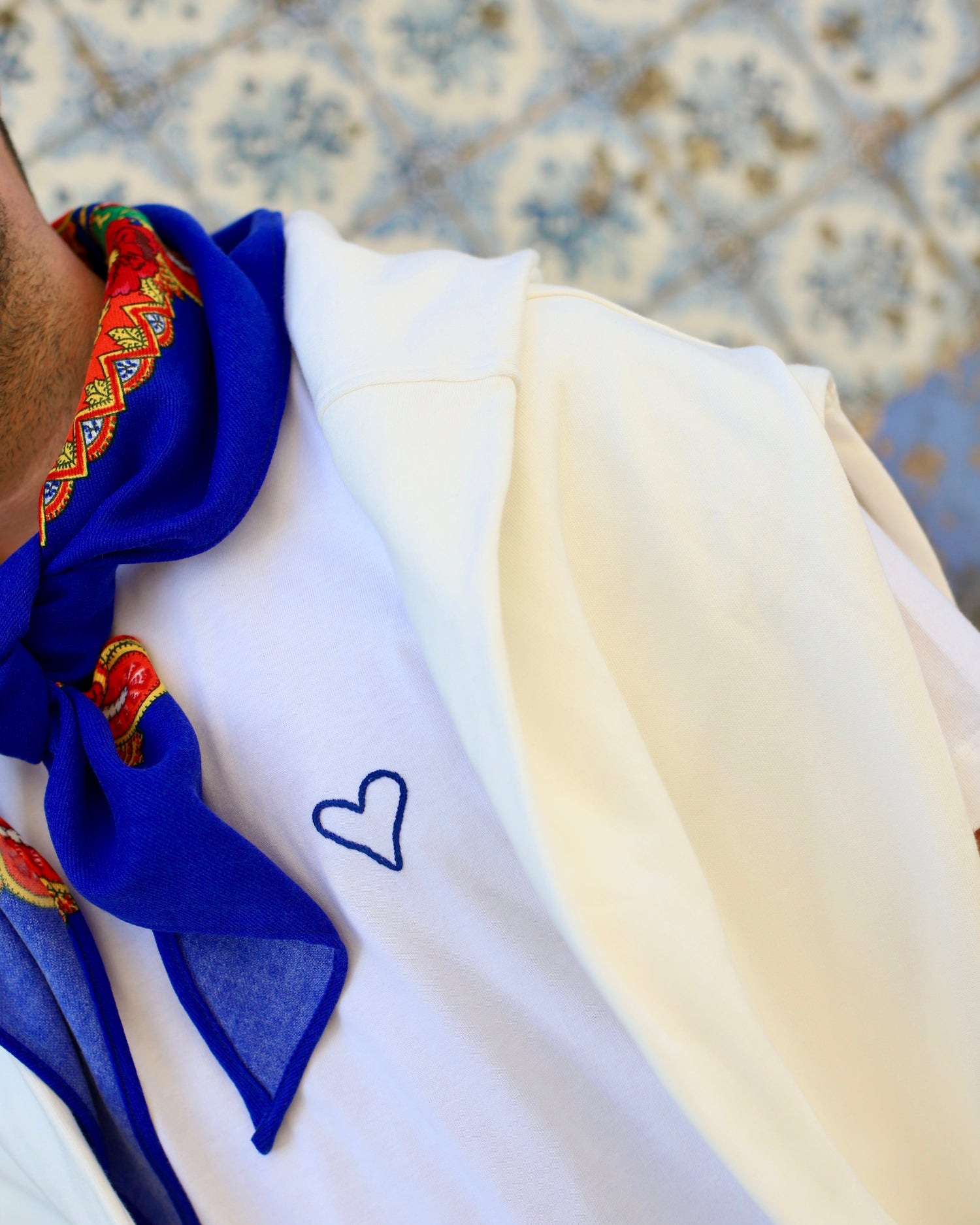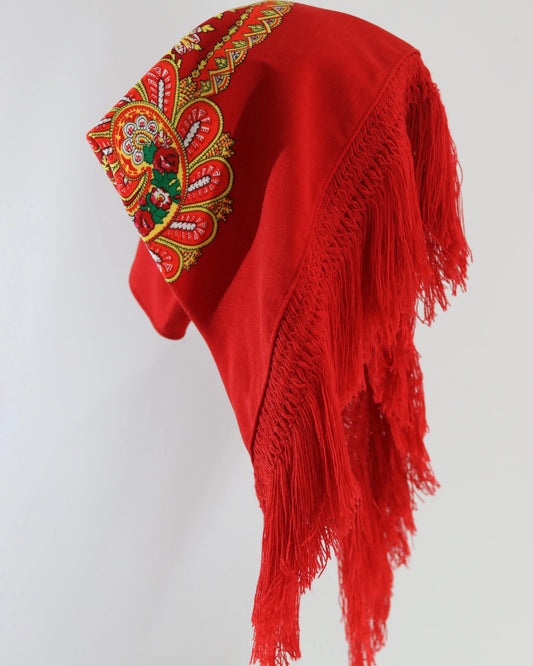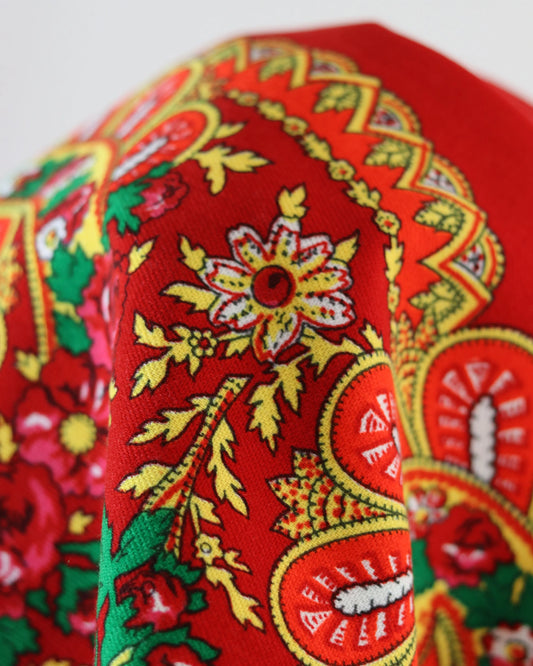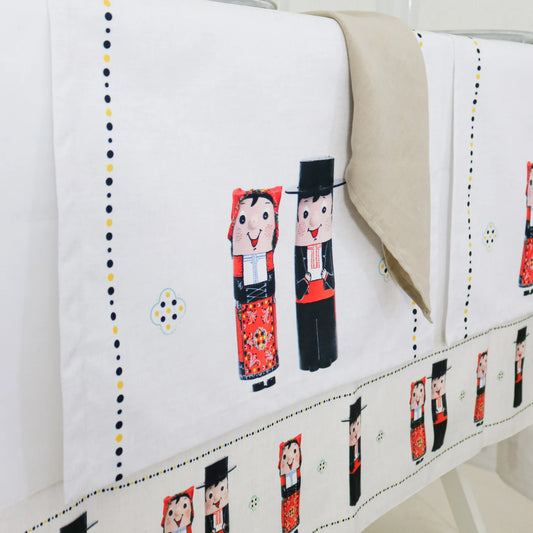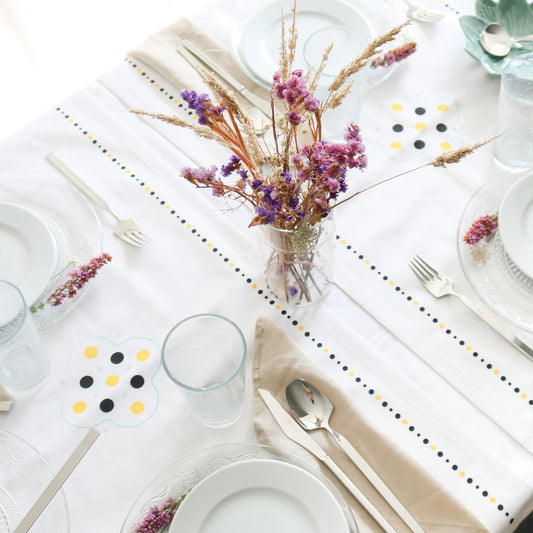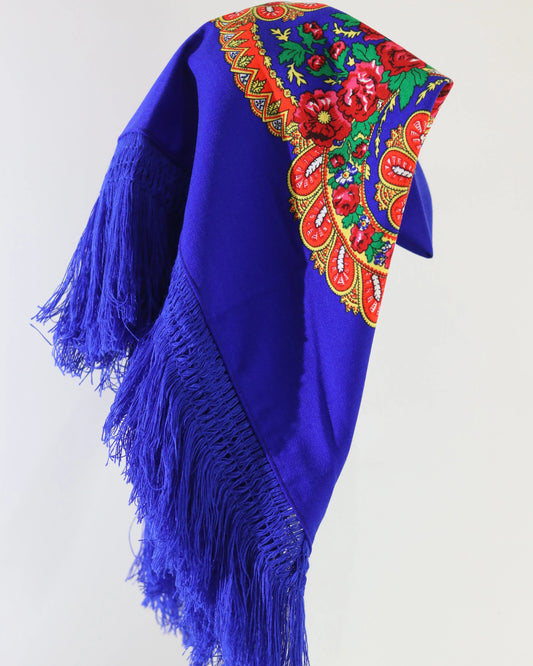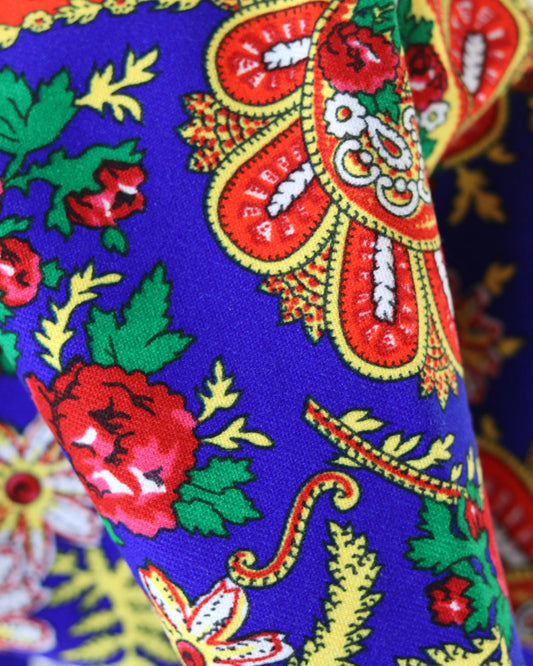Discover what it means to say “Viana is love”
There are phrases that seem simple and yet stick with us. When someone says "Viana is love," they're not just repeating a cool slogan. They're carrying collective memories, vivid images, and a way of life that blends sea and river, mountains and city, tradition and future. Love here isn't abstract. It has color, sound, the scent of the sea, filigree that shimmers in the sun, and a heart visible in the chest and in the tiles on the street corners.
Viana do Castelo learned to say "love" in many languages, from sailing to dance, from devotion to innovation. And he continues to say it every day, in very concrete ways.
What does “Viana is love” mean, bluntly?
The phrase sums up a pact between place and people. It's a gesture of belonging.
- It's identity. In Minho, symbols aren't mere images; they're a way of being. Viana's heart isn't just jewelry; it's a declaration of delicacy applied to life.
- It's hospitality. Those who arrive feel like they have time to chat and share a table.
- It's about care. The clean streets, the manicured gardens, the salt and flower carpets at the main festival speak volumes about how the community views you.
It also has to do with human scale. Viana is small enough to walk around and rich enough to never run out of things to talk about. This creates closeness. And closeness creates bonds.
There's also an emotional side that arises from the meeting of Lima and the Atlantic. The river, with its serenity, meets the restless sea, and this tension nurtures a unique energy. Anyone who spends a few days here notices this without needing explanation.
The heart that became language
The "Heart of Viana" is perhaps the most recognizable piece of Portuguese filigree. It began as a promise and devotion, gained curved lines reminiscent of flames and leaves, and today is the visual language of the entire city.
- Filigree: gold or silver threads twisted and soldered with precision, a technique perfected by generations of goldsmiths in the region.
- Central motif: the hollow or filled heart, with contours that refer to the flame of the Sacred Heart, reinterpreted in a popular key.
- Everyday use: in clothing, in threads, earrings, pendants; on party days, in proud layers.
More than just an ornament, the heart is a metaphor. It represents undisguised tenderness. It also symbolizes meticulous work, patience, and attention to detail. Those who say "Viana is love" are referring to this grammar of small, beautiful gestures.
The craftsmanship that sustains the symbol
Filigree intersects with other Viana arts: linen embroidery, bobbin lace, blankets, and scarves that hold messages. Each stitch is a microact of affection. Touching a handmade piece reveals its own rhythm, an almost musical cadence. It's the time invested that gives things their warmth.
Devotion, sea and music: when the city vibrates
There's a week in August that condenses expression in all its breadth. The Romaria d'Agonia transforms Viana into an emotional stage.
- The Mordomia Parade, with hundreds of women in Viana costumes, shining gold and showing pride.
- Procession to the sea, blessing of the boats, whistles, sirens and a collective reverence for fishing activity.
- Carpets of salt and flowers, created by residents during the early hours of the morning, ephemeral and precious.
- Rusgas, accordions, giants and big heads marking time in the streets.
It's no exaggeration to say that the city declares itself. And it does so to the sound of the vira, with firm steps and a broad smile. It's this choreography of belonging that gives substance to the phrase.
Places that tell the same story
Certain places seem to explain on their own what “love” is here.
- Santa Luzia, high above, with the basilica dominating the skyline and a view that embraces sea, river, and plain. Going up in the funicular has something of a ritual.
- Praça da República, with the fountain, the old City Hall and the Igreja da Misericórdia, where stone meets tile.
- The Lima River, with terraces, a cycle path and the hospital ship Gil Eannes, a floating memory of care and bravery.
- Eiffel Bridge, a piece of engineering that is also an image of passage and connection.
- Cabedelo Beach, with its pine forests, long sand, and wind that calls for kites and boards. At the end of the day, the light turns to honey.
- Serra d'Arga, where silence has texture, the mills count water and the villages breathe slowly.
Each of these scenarios returns the phrase to the body. In Santa Luzia, the heart beats slowly. In Cabedelo, it accelerates.
A city that knows how to talk
Much of what we understand as love in Viana involves ways of speaking and being. The conversation is direct, unadorned, yet warm. The word "moleque" comes out lightly, "poi" carries multiple meanings, and humor appears early.
The relationship with work is one of pragmatism and pride. Goldsmiths, fishermen, lacemakers, sargassum collectors, canners, shipyard engineers, designers who open shops in the historic center—all share a clear sense of doing things well. And doing things well is an emotional language, even when discussing industry.
Flavors that warm up the day
Gastronomy also means "love." In Viana, the table is a bridge between generations.
- Codfish à Viana, with confit onions, honest olive oil and potatoes that absorb everything interesting.
- Sarrabulho rice, rojões, a Minho tradition that calls for long conversation.
- Lima Lamprey, when the season brings the river to the plate.
- Octopus, sardines, fish stew, flavors of the sea that arrive fresh.
- Convent sweets, touched by sugar and history.
- Vinho Verde, with bay leaf and alvarinho for a refreshing drink, perfect for warming up the afternoon.
Eating here is a way of giving thanks. And of belonging.
Symbols and experiences, side by side
The phrase "Viana is love" takes shape in concrete signs. It's worth comparing symbols with what they make us feel.
| Symbol or place | Affective meaning | Suggested experience |
|---|---|---|
| Heart of Viana | Care, delicacy, promise | Visiting a goldsmith and seeing filigree in person |
| Saint Lucy | Contemplation, shared horizon | Climb to the viewpoint at sunrise |
| Lima River | Serenity, flow, return | Walk along the shore at dusk |
| Atlantic/Cabedelo | Energy, freedom | Surfing or kiteboarding lesson on a windy day |
| Republic Square | Community, meeting | Long coffee and space shuttle viewing |
| Ship Gil Eannes | Care, courage, memory | Visit to the deck and sick bays |
| Viana costume | Pride, heritage | Costume Museum and a conversation with artisans |
| Salt carpets | Precious ephemeral, joint work | See the montage during the early morning |
| Eiffel Bridge | Connection, passage | Photographing at dusk |
A brand that is also a hug
In recent years, the city has adopted the expression as a public signature. It's seen in cultural campaigns, shop windows, events, city hall communications, and small businesses. This adoption isn't just marketing; it's a way of telling outsiders and insiders alike: here, we care about what matters.
When a phrase becomes a brand, it risks losing its substance. In Viana, what keeps it alive is its daily consistency. If visitors find cozy streets, well-maintained amenities, quality cultural programming, and attentive people, the phrase gains credibility. Otherwise, it would weaken the gesture. What we observe is consistency.
There's also a natural connection with the world of weddings and romance. Many brides choose Viana, wearing their hearts on their chests, and requesting photos in the churchyard of Santa Luzia and on the sands of Cabedelo. Filigree shops customize pieces with dates and initials. Love here has a date, a place, and witnesses.
Sea and industry, tradition and technology
The local economy demonstrates how this phrase coexists with robust realities. Shipyards are an essential part of memory and the present, with technology and know-how that generate skilled jobs. The maritime sector, from fishing to research, coexists with tourism and culture. There are creative centers in the old town, studios that restore heritage, cafes that become stages.
Love for a place is also measured by its ability to project it into the future. Investment in soft mobility, urban redevelopment, and a broad cultural program signal that the phrase isn't just a vague sentiment. Viana gives it structure.
A day that fits in the heart
Simple proposal to feel the phrase without rushing.
- 08:30 Breakfast at a bakery in Praça da República. Warm bread, butter, and coffee made with care.
- 09:30 Visit to the Costume Museum. Observe fabrics, prints, and family stories.
- 10:30 Jewelry store in the historic center. Watch the filigree taking shape on the stand.
- 11:30 Funicular to Santa Luzia. Time to let the view do its work.
- 1:00 pm Lunch with codfish à Viana and a glass of laurel.
- 14:30 River tour, entrance to Gil Eannes.
- 16:00 Bike along the Lima ecovia, calm and green.
- 6:00 PM Cabedelo. Those who prefer can go into the sea. Those who don't can watch the wind paint the sand.
- 20:30 Dinner of Minho snacks, long conversation.
- 22:30 It becomes improvised, or simply a walk through the center with ice cream in hand.
This itinerary is just a starting point. The best things happen when we get lost on the right street.
Words, music and gestures
Traditional music has lyrics that speak of encounters, embroidered scarves, and exchanged promises. The "Vira de Viana" resonates at festivals, but also in contemporary versions that local and national artists have recreated. The present pays attention to the past, without copying it literally.
In gestures, a detail: the way the display case is carefully arranged, the way the tablecloth is wiped on the counter, the way the fish is handled at the early morning auction. All of this is affective language available to anyone who wants to read it.
Landscape that takes care of the spirit
There are places in Viana where your breath changes. In Serra d'Arga, the water rushes with a sound that organizes us internally. On the sands of Afife or Âncora, your gaze widens. On the banks of the Lima River, the winter light leaves a silvery hue that resembles painting. The geography offers both calm and impetus. And this, when embraced, transforms anyone's day.
Short walks, observation points, breaks with a book. It doesn't take much for the landscape to do its job.
Community and future with a human face
Schools, cultural associations, sports clubs, ranches, scout groups, and communities keep the city moving. Children learn the heart of Viana before they know how to write filigree. Teenagers rehearse dances, musicians compose, teachers and artisans share their knowledge.
Viana speaks of love when she cares for her people. Social programs, space renovations, accessible festivals, living libraries. Those who live here feel a sense of purpose. Visitors notice clear signs in the details.
Little rituals to take with you
- He stops by a filigree shop and asks about the history of a piece. He listens carefully.
- Buy bread and fruit from local stores. Learn the name of the person serving you.
- Sit by the river and do nothing for fifteen minutes. Let Lima say anything.
- If it's August, you'll see the salt carpets being laid in the early hours. Keep quiet.
- Learn two quick steps and risk a smile in the middle of the square.
- Climb Santa Luzia at dawn with someone you love. Share the view.
- Carry a handkerchief with a small embroidery. Wear it, don't keep it in a drawer.
- Try a surf lesson in Cabedelo. You'll leave with sand on your feet and salt on your skin.
- Order a plate of cod à Viana and toast with a fresh bay leaf. Look into the eyes of those at the table.
- Photograph the Eiffel Bridge at dusk. Save the photo and return a year later.
"Viana is love" reveals itself best when we let the city define our rhythm. A phrase becomes true when it doesn't need to be repeated too often. In Viana, all you have to do is listen.



